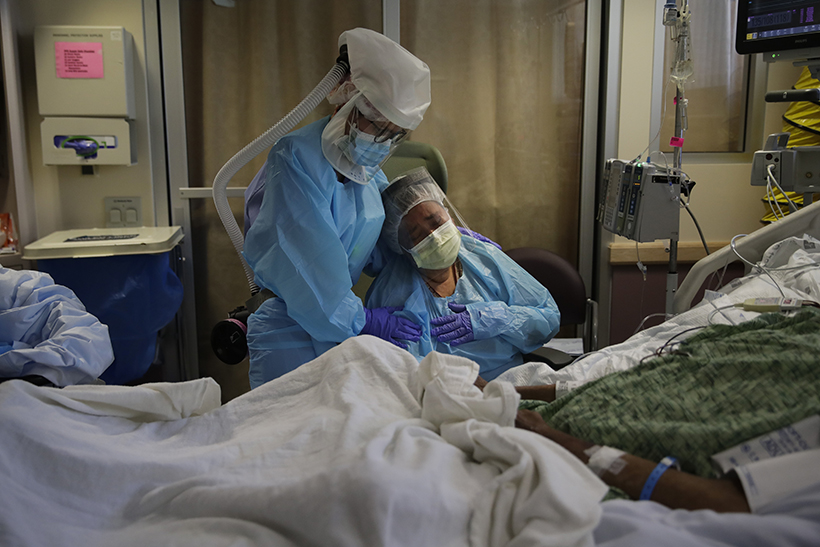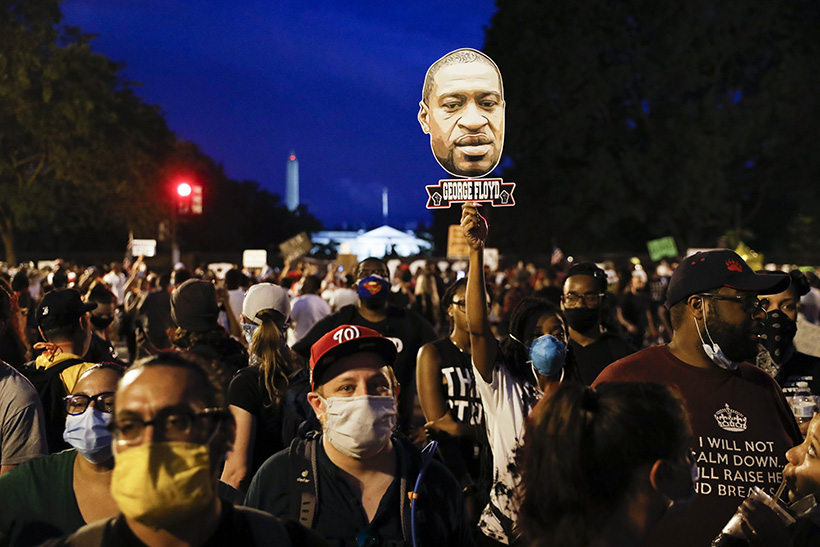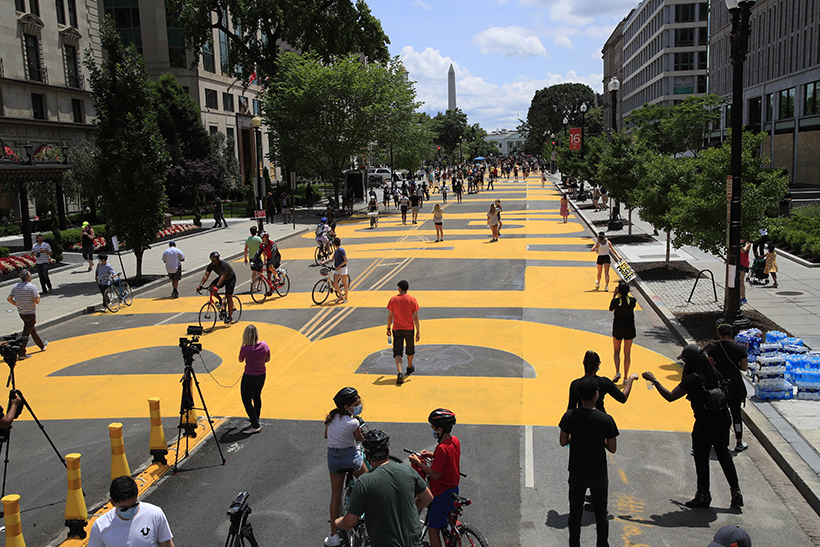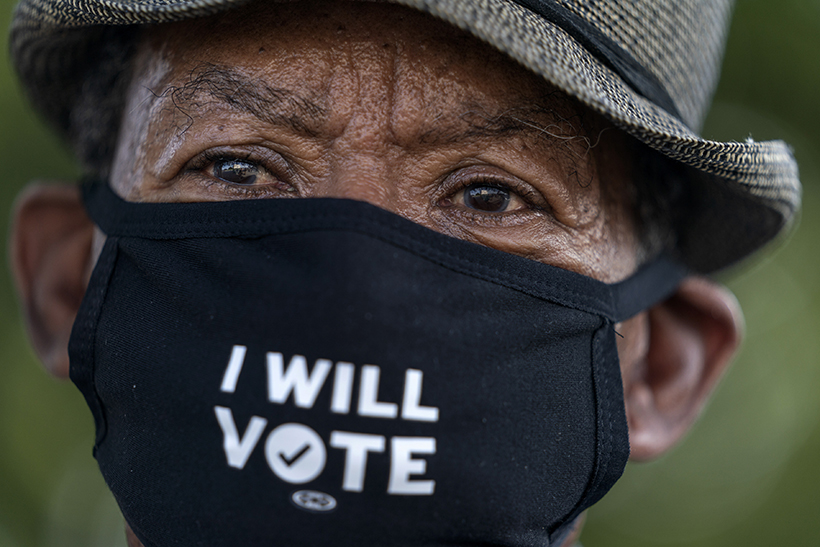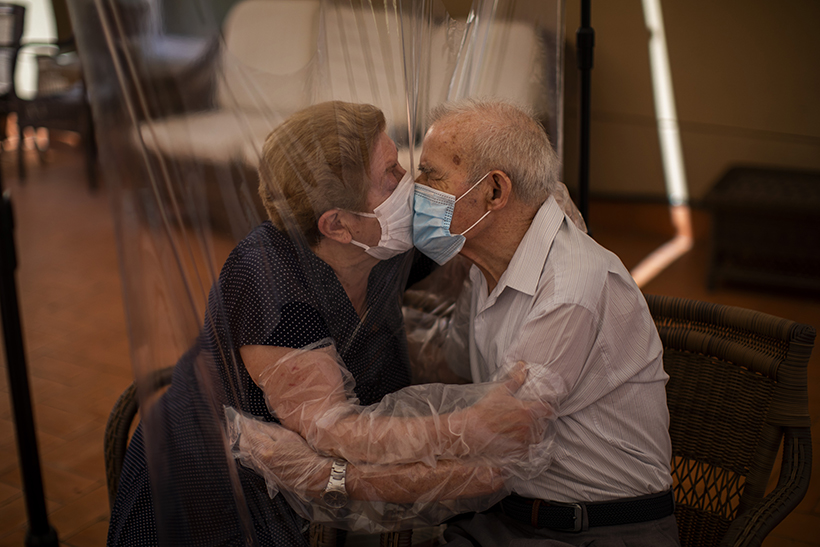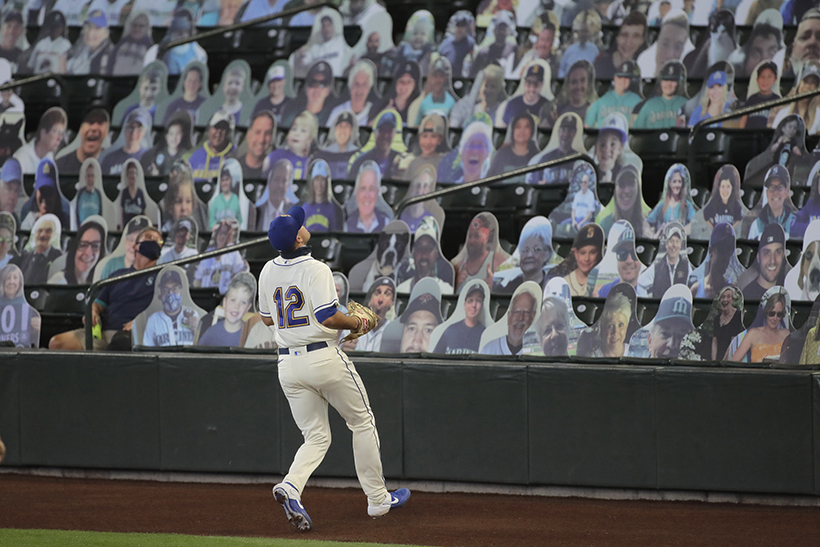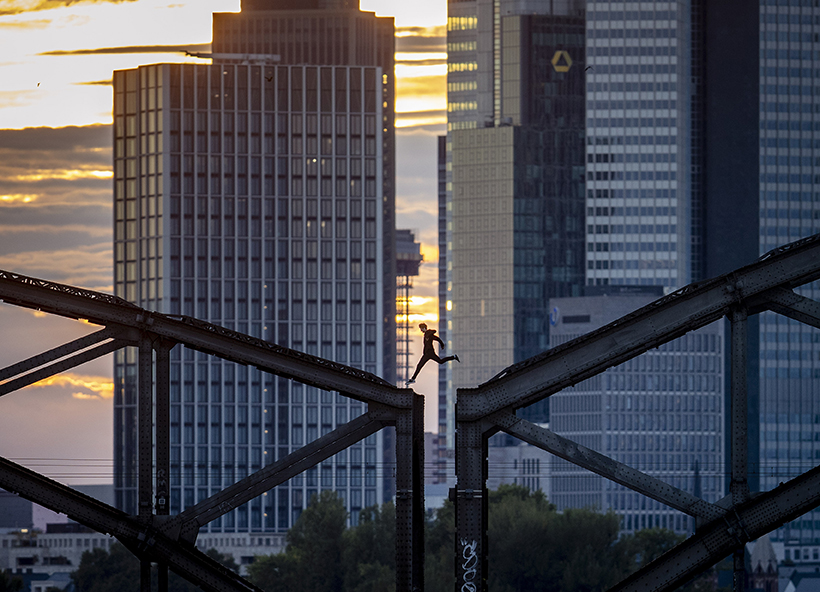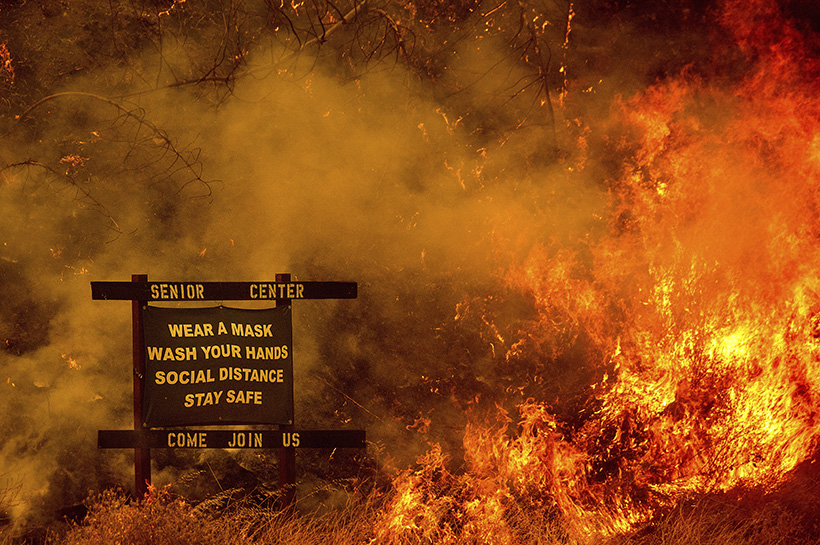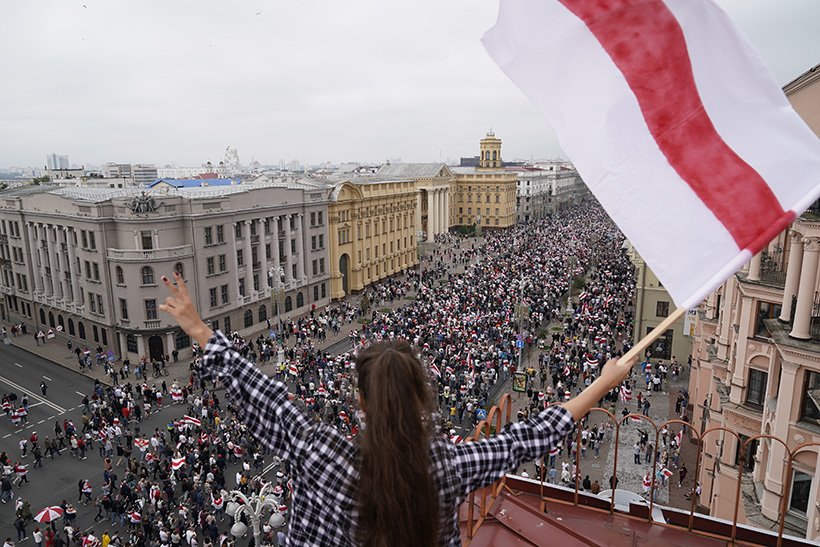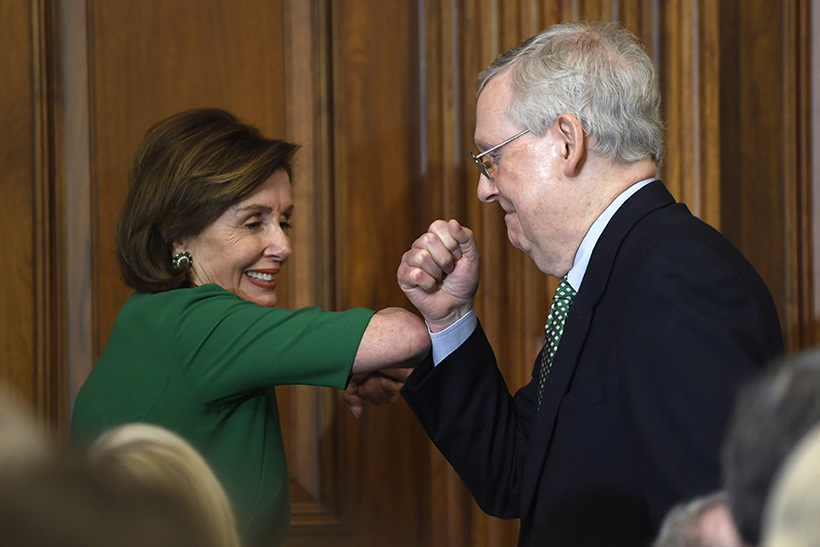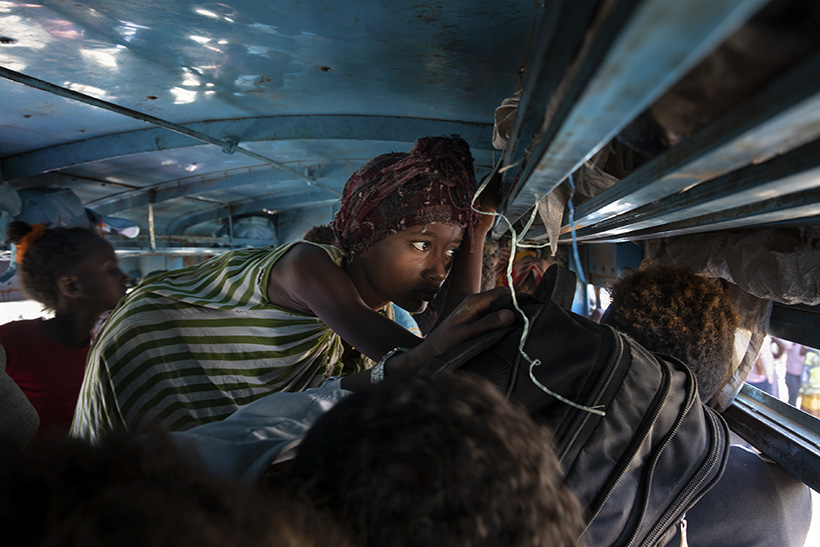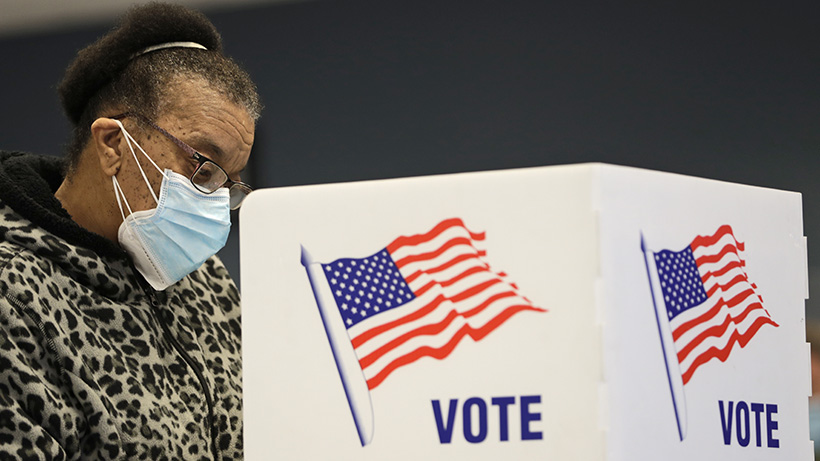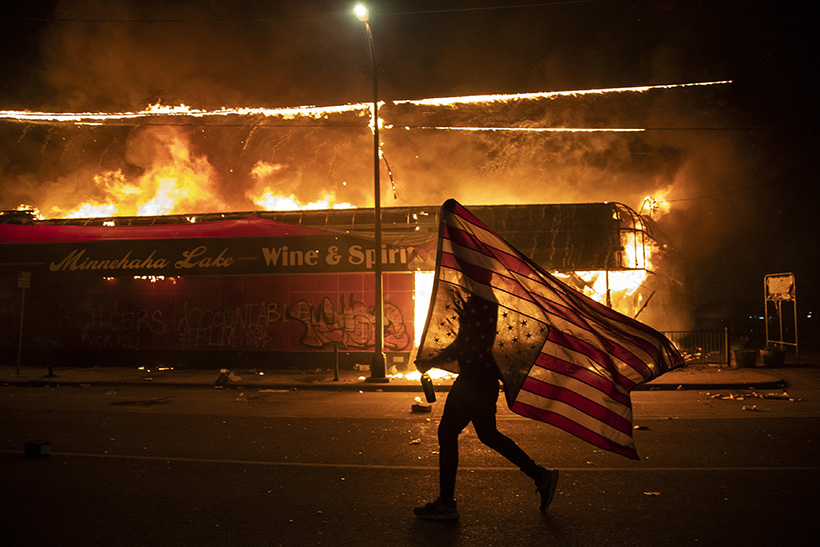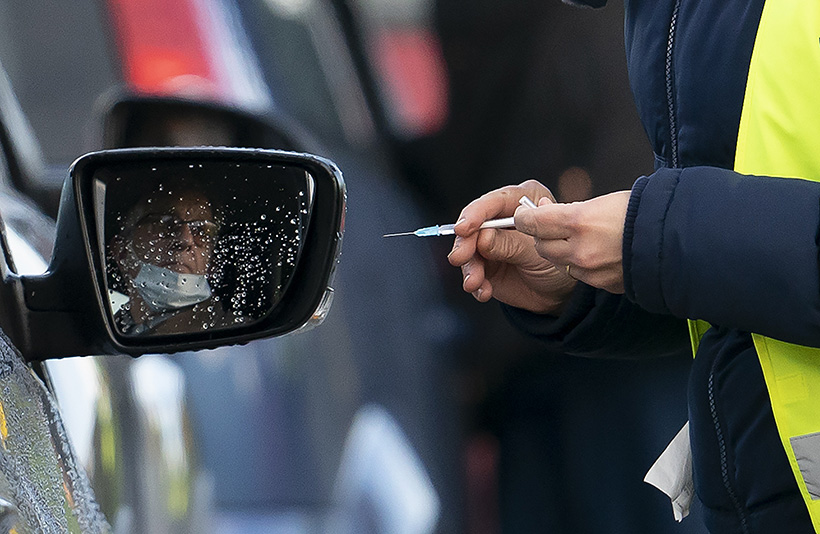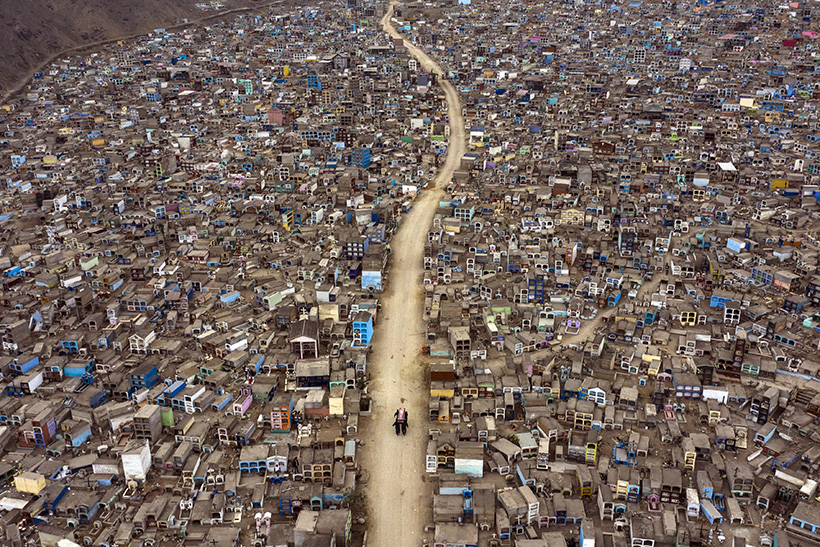As we write this letter, AP’s journalism continues to illuminate the grim toll of COVID-19. Exclusive, all-formats coverage took the world inside overwhelmed intensive care units from New York to Milan, illustrating the trauma but also the heroism happening behind closed doors. We showed overflowing funeral homes, shuttered small businesses, empty stadiums and so much more. We produced data-driven reporting detailing the virus’ disproportionate impact on people of color and the most vulnerable among us. As hope abounds with the administration of vaccines, AP continues to document stories of both cautious optimism and growing virus inequity around the globe.
Video, photos and poignant text stories illuminated a racial reckoning in America and across the world in 2020, as protests over racial injustice and police brutality brought systemic racism and social inequality to the fore. This movement led to important and difficult conversations everywhere, including at the AP. We want to do better. We remain committed to diversity, equity and inclusion, and to continuing the conversation.
Before, during and after the U.S. presidential election, AP provided the facts. We held the powerful to account with our thorough fact checks, we debunked misinformation and we comprehensively covered the campaign. Moreover we delivered the results of the election without fear or favor, informing the world of the next president of the United States and explaining how we declared the winner.
The beginning of 2021 brought an unprecedented insurrection at the U.S. Capitol, and with it attacks on journalists, including AP staff. These attacks on press freedom continue all over the world. Just last month AP journalist Thein Zaw was released from prison in Myanmar after spending over three weeks behind bars, detained while covering a protest against the country’s military coup. We know that a free press is more crucial than ever — everywhere — as the public tries to navigate fact from fiction.
At AP, our commitment to stellar visual journalism remains unwavering. Our photojournalism from Kashmir, showing the world the reality of life inside the disputed region under lockdown, earned AP its 54th Pulitzer Prize. We’ve made a major investment to equip all of AP’s photographers and video journalists around the world with state-of-the-art mirrorless cameras, allowing us to file faster and provide our customers with even sharper visuals that tell the world’s stories.
We continue to innovate and collaborate to deliver the news quickly and comprehensively. In 2020 that meant an unparalleled shift to remote work, which we achieved without missing a beat. Beyond that, we launched the ability for our customers to replay live video. Our work with foundations and nonprofits allowed us to dive deep into traditionally under-covered areas, such as religion and faith. Working with PBS “Frontline,” AP earned an Emmy for a joint investigation into record numbers of migrant children in detention under the Trump administration. We expanded our pilot AP StoryShare program to four states, enabling members and nonprofits to share their content and coverage plans to provide more local and state news to their communities. Thousands of stories have been shared.
All of this essential work continues in 2021 as AP celebrates its 175th anniversary. Just as it did when the cooperative was founded in 1846, AP today works with its member news organizations and customers so we can keep providing the important, fact-based journalism that the world relies on.
Here’s how we did in 2020:
Covering the pandemic
The COVID-19 pandemic continues to be a global story with lasting impact. In 2020, we uncovered much inequality. AP’s Data and Race and Ethnicity teams revealed the pandemic’s disproportionate impact on Black and Hispanic Americans. Dogged reporting exposed the uneven global distribution of COVID-19 vaccines and the scarcity of oxygen in some of the world’s poorest countries.
Source work paid off as blockbuster AP scoops revealed the Trump administration’s efforts to shelve the Centers for Disease Control and Prevention’s reopening guidelines. Exclusive reporting from across the globe uncovered the World Health Organization’s frustration and concern with China’s initial response to COVID-19.
AP also produced standout accountability reporting. We called the public’s attention to New York’s undercounted nursing home deaths months before the state’s own audit. Our analysis of public records found the Roman Catholic Church was perhaps the largest beneficiary of the U.S. Paycheck Protection Program.
Ultimately we told the story of a world at the brink. We showed coronavirus epicenters in some of the world’s hardest-hit areas. Dramatic and devastating photos illustrated the lives lost, from mass graves to socially distanced funerals. We gained access inside emergency rooms and ICUs where patients fought for their lives and medical workers fought to save them. Captivating visuals shined a light on coronavirus death and denial in Brazil’s Amazon, painting a dire picture of what was happening in South America’s largest country. A constant stream of text stories, images and videos chronicled the pandemic’s impact on daily life, from deserted subway stations in New York to empty soccer stadiums in Spain.
Racial justice reporting
When the death of George Floyd sparked a nationwide racial reckoning, AP was there to document weeks of protests in all 50 states and overseas. In Minneapolis, where Floyd was killed, text reporters filed detailed updates from the field while photographers and video journalists captured stunning visuals of the demonstrations, some of which turned violent. An AP photo of a protester carrying the U.S. flag upside-down — the universal sign of distress — silhouetted against the flames of a burning liquor store quickly became the defining image of the moment.
In New York, AP documented massive demonstrations and clashes between police and protesters. In Portland, following weeks of calls to defund police departments across the U.S., AP journalists spent a weekend embedded with demonstrators and federal agents, providing unmatched perspective from both sides of the political divide. Leveraging its 50-state footprint, AP delivered all-formats profiles of protesters in big cities including Chicago and predominantly white areas of the U.S., such as Utah.
AP staff around the world chronicled the international response to Floyd’s death, including demonstrations in Berlin, Brisbane, London, Seoul and Tel Aviv. In Paris, one protester told AP Floyd’s death “was the spark that spread across the world.”
As protests wound down, in-depth coverage of race-related issues ramped up. We examined the lingering undercurrent of racial inequality in seemingly routine encounters that turn violent between police and African Americans. We examined racial and regional disparities in the reopening of schools across the U.S. A searing review of virus-era attacks on Asian Americans put a spotlight on minority communities. Using data, we exposed racial inequality in COVID-19 vaccinations. We produced all-formats coverage from Indian Country, from capturing the pandemic’s grim toll in the Navajo highlands to Deb Haaland’s confirmation as interior secretary, the first Indigenous person to hold a cabinet position. We continue to tell these essential stories in 2021.
Explaining the election
As it has done since 1848, AP successfully delivered the results of the U.S. elections, informing the world about the winner of the White House, control of Congress and every state legislature. We did this accurately and transparently, showing our work to the American people and the world.
In an unprecedented election upended by the coronavirus pandemic and capped by huge voter turnout, AP compiled the vote and declared winners in some 7,000 races. We produced accurate and incisive fact-based journalism seen by billions.
AP’s all-formats coverage was comprehensive, compelling, and fair. We brought order and clarity to the decentralized U.S. election system, produced explanatory journalism around each of our presidential race calls, confronted misinformation in real time, and delivered text stories, photos, videos and graphics in innovative ways. And for the first time in a presidential election, AP deployed AP VoteCast, its accurate, wide-ranging survey of the American electorate, in all 50 states, telling the story of who voted and why.
In the immediate aftermath of the election, AP delivered robust factual reporting around the challenges mounted by former President Donald Trump over the integrity of the results. We broke news that the Justice Department found no evidence of widespread election fraud and analyzed how Black voters helped deliver Joe Biden the presidency. Our strong record of accountability journalism continues in the Biden administration.
Standout journalism
From breaking news coverage to exclusive journalism, AP’s reporting in 2020 had impact.
- AP exposed widespread labor abuses in the lucrative palm oil industry, which led to the U.S. government banning shipments from two major Malaysian producers. AP used U.S. Customs records and data to trace the oil harvested by workers to major brands such as Nestle, Unilever, Kellogg’s and PepsiCo. The work was recognized with an Overseas Press Club award, the Anthony Shadid Award for Journalism Ethics and the Selden Ring Award.
- Myon Burrell, a Black man who as a teenager was sent to prison for life nearly two decades ago, had his sentence commuted in Minnesota following an AP investigation that found major irregularities in his case.
- Fast, stunning coverage of the deadly Beirut port explosion showed the world the devastation of the blast and then dove into how it happened. AP journalists on the ground leapt into action despite countless obstacles, personal loss and injuries.
- AP produced one of the most consequential news breaks of the year when Attorney General William Barr revealed in an exclusive interview that the Justice Department found no evidence of widespread voting fraud in the 2020 U.S. elections, undercutting President Donald Trump’s claims to the contrary.
- In challenging conditions and subzero temperatures, AP delivered sweeping live coverage of widespread protests in Russia across 11 time zones following the jailing of opposition leader Alexei Navalny.
- Extensive coverage showed the unrest in Belarus following the country’s disputed elections, including exclusive, on-camera interviews detailing fraud.
- AP was first to report the untimely death of star actor Chadwick Boseman, news we were trusted to break because of our reputation for accurate and factual journalism.
- When an overnight blaze swept through Greece’s biggest refugee camp on the island of Lesbos, AP told the story first, producing cross-format coverage that stood out even as much of the world media flocked to the chaotic scene.
- An exclusive AP story revealed China forced Uighurs to cut births with IUDs, abortions and sterilization, drawing global ire.
- Following a 17-year hiatus, AP witnessed 13 federal executions in six months, delivering the first word that the executions had been carried out and producing a steady stream of news breaks. AP’s eyewitness accounts allowed us to refute federal executioners’ sanitized descriptions of the deaths.
- A gripping exclusive revealed a failed plot, dubbed the “The Bay of Piglets,” to oust Venezuelan President Nicolás Maduro by a ragtag group of 300 volunteers led by a former Green Beret.
- All-formats coverage documented ongoing climate change, including a historic hurricane season, extreme winter weather in Texas, locust outbreaks in Africa and massive wildfires in the U.S. West. An AP image of flames surrounding a COVID-19 senior center in Northern California was hailed as a sign of the times.
Innovation and collaboration in news and business
When the coronavirus gripped the world in earnest in March 2020, a team of staffers based in London and Washington transitioned AP’s sprawling video and audio operations to remote editing and filing in a matter of days. This work has been paramount in ensuring the success of AP’s transition to a work-from-home environment. The massive shift, which has yielded the creation of new workflows, technology solutions and ways to collaborate, has been critical to AP’s ability to tell the story of not only the pandemic but every major story since.
Other notable examples of innovation and collaboration in 2020 include:
- A major investment in cutting-edge Sony equipment for all of AP’s video journalists and photographers, which will allow AP to continue to produce world-class visual journalism and deliver it to customers faster than ever.
- The implementation of AP Replay, which allows AP’s live video customers to replay and use live event coverage for up to a week after it’s delivered.
- The Technology and Engineering Emmy Award won for AP’s industry-leading newsroom production system ENPS, which is used by more than 60,000 journalists in 700 newsrooms in over 50 countries.
- The creation of AP Playbook, a planning tool used internally at AP and by our customers around the world to better organize and communicate coverage plans.
- The introduction of a new text filing and editing system, which allowed our journalists to operate more efficiently and our customers to get news more quickly. This has never been more relevant or essential with AP’s global staff working remotely.
- The launch of a new daily newsletter, AP Morning Wire, providing one more outlet for AP’s factual journalism.
- The history-making publication of AP election results on the blockchain — the first ever U.S. election results ever recorded on the digital ledger.
- The expansion of AP StoryShare, a tool that allows newsrooms to share content and coverage plans when and how they want, has fostered the sharing of more than 4,000 stories in Colorado, New York, Oregon and West Virginia. This is the evolution of the cooperative.
- A joint investigation with Kaiser Health News laid bare the hollowed-out state of the U.S. public health system, reporting that earned the Kavli Science Journalism Award from the American Association for the Advancement of Science.
- Working with the Chronicle of Philanthropy and The Conversation, AP launched coverage of the philanthropy world, with a grant from the Lilly Endowment.
- We renewed our commitment to coverage of religion, faith and spirituality with funding from the Lilly Endowment.
- The addition of 17 statehouse reporters through a collaboration with Report for America provided local newsrooms with essential accountability journalism and state government coverage.
- PBS “Frontline” and AP worked together to investigate medical supply chain breakdowns and the mass detention of migrant children in the U.S., the latter earning a News and Documentary Emmy Award.
- Work with the Carnegie Corporation of New York allowed us to dedicate AP reporters to covering the critical topic of voting rights in the run-up to, during and after the U.S. elections.
- We laid the groundwork for additional climate reporting, a newsroom priority, with funding from the Walton Family Foundation to cover water issues in the U.S.
- A first-of-its-kind collaboration with Indian Country Today amplified stories on Native American communities to a broad audience.
In these tumultuous times, AP’s mission to advance the power of facts is not just important but essential. We are proud of the journalism and services we provided in 2020. Despite challenges caused by the pandemic, AP emerged from the year in strong financial shape, debt free and ready to serve its customers better than ever in 2021.


